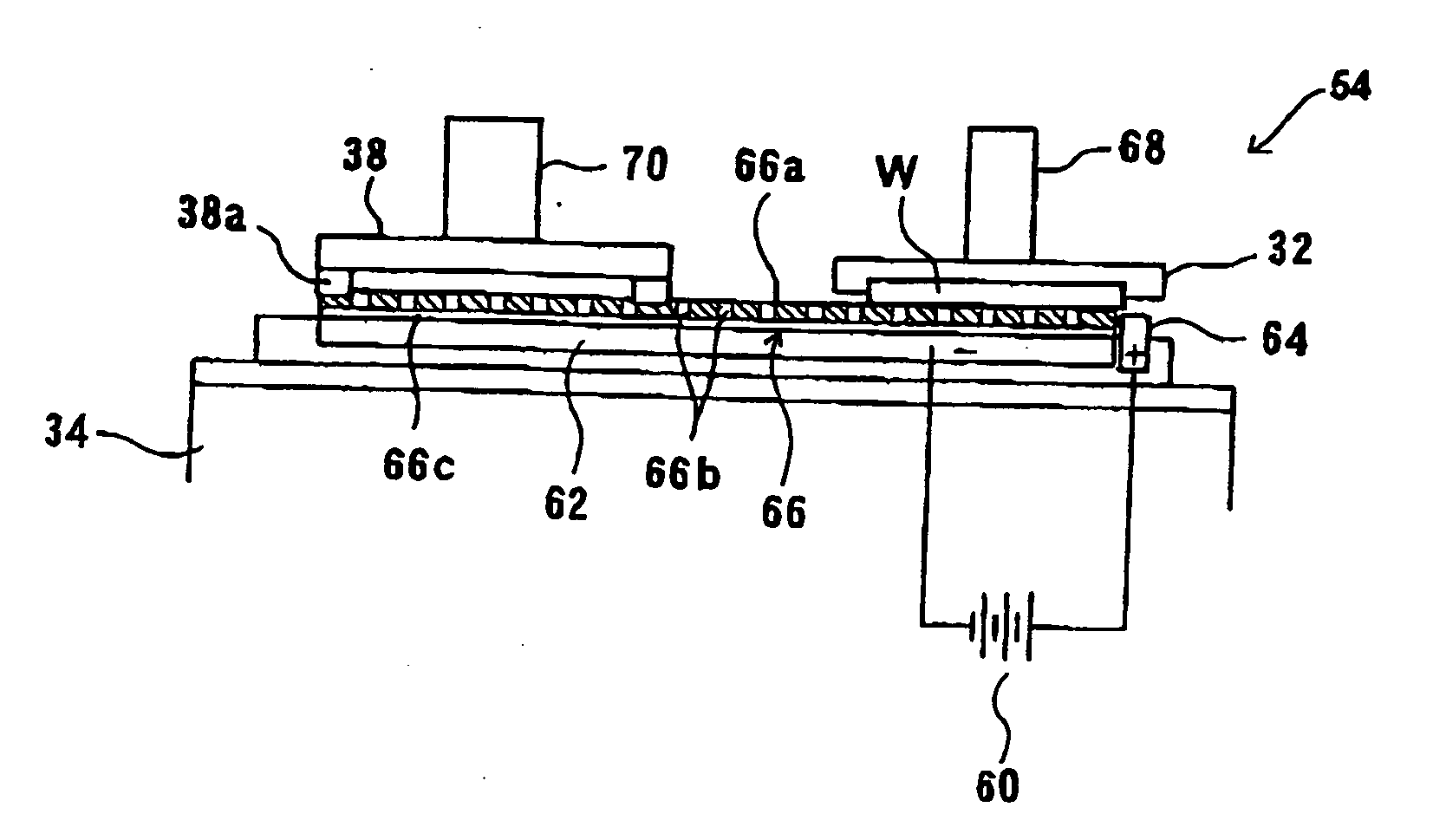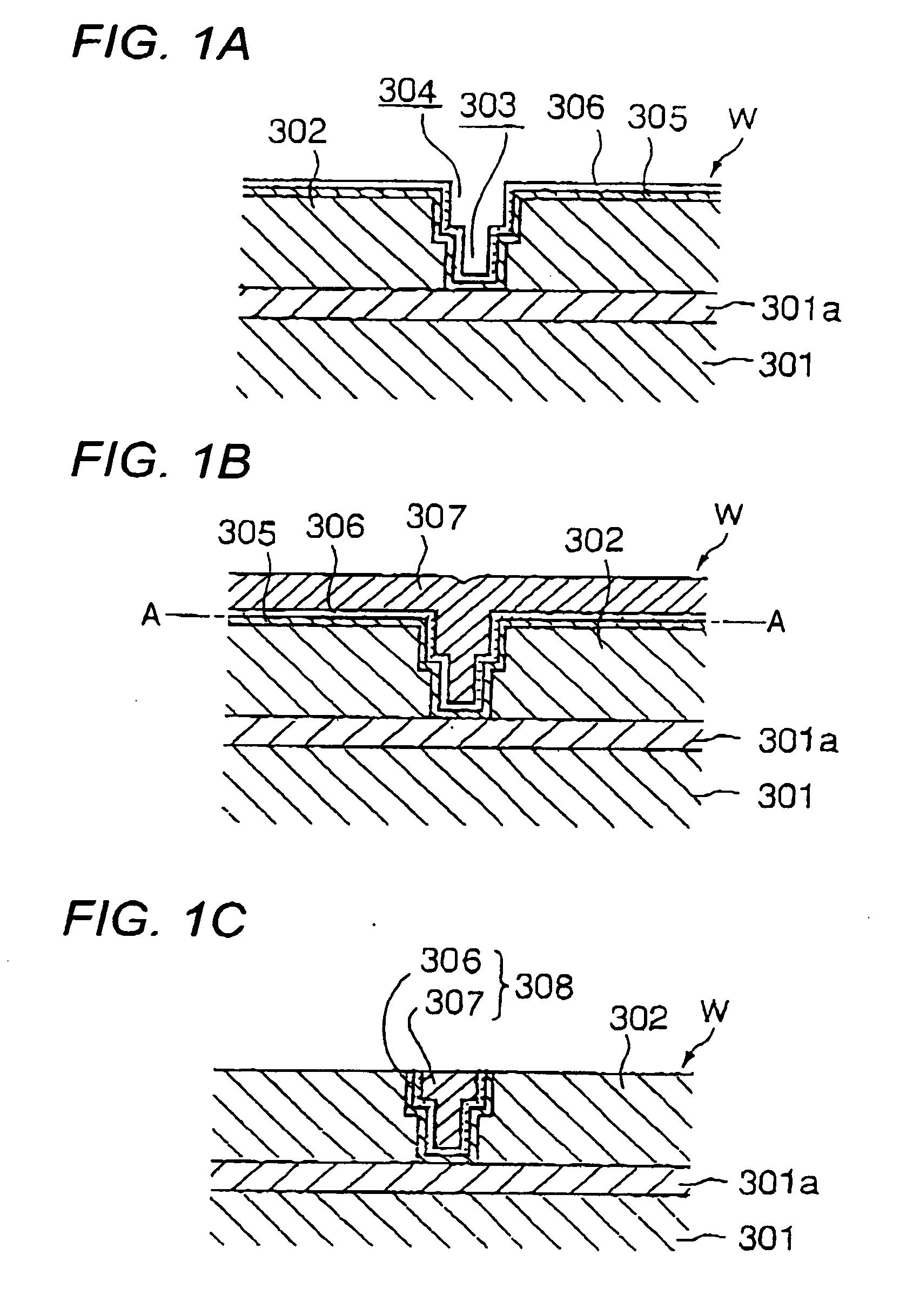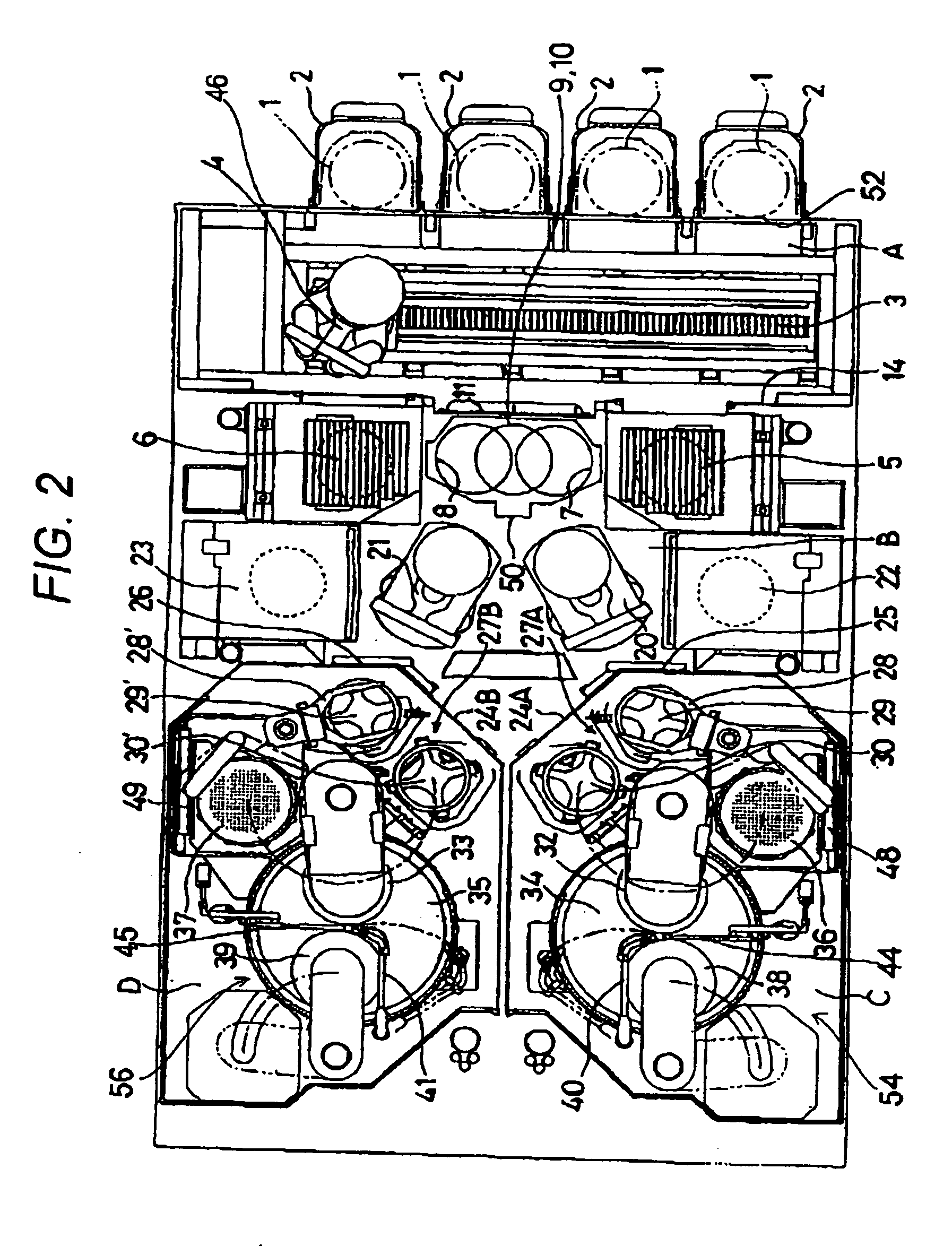Polishing pad and polishing apparatus
- Summary
- Abstract
- Description
- Claims
- Application Information
AI Technical Summary
Benefits of technology
Problems solved by technology
Method used
Image
Examples
experimental example
[0192] A 100 mm-diameter dresser A with diamond abrasive grains electrodeposited on a surface and a 100 mm-diameter dresser B with diamond abrasive grains, having a higher grain count (smaller size) than the abrasive grains of the dresser A, electrodeposited on a surface, were prepared. A polishing pad composed of IC-1000, manufactured by Nitta Haas Inc., was dressed (conditioned) with the dresser A at a pressure of 3.2 psi. The same polishing pad was dressed with the dresser B at a pressure of 0.64 psi. Dressing of the same polishing with the dresser B was also carried out but at a different pressure of 0.4 psi. Polishing of a surface of a substrate (semiconductor wafer) was carried out using each of the dressed polishing pads, and a change in a surface level difference with the progress of polishing was measured on each of the test substrates to examine a difference in the fattening characteristic between the substrates. In the experiment a load of 25 N (including the own weight o...
PUM
| Property | Measurement | Unit |
|---|---|---|
| Fraction | aaaaa | aaaaa |
| Fraction | aaaaa | aaaaa |
| Pressure | aaaaa | aaaaa |
Abstract
Description
Claims
Application Information
 Login to View More
Login to View More - R&D
- Intellectual Property
- Life Sciences
- Materials
- Tech Scout
- Unparalleled Data Quality
- Higher Quality Content
- 60% Fewer Hallucinations
Browse by: Latest US Patents, China's latest patents, Technical Efficacy Thesaurus, Application Domain, Technology Topic, Popular Technical Reports.
© 2025 PatSnap. All rights reserved.Legal|Privacy policy|Modern Slavery Act Transparency Statement|Sitemap|About US| Contact US: help@patsnap.com



